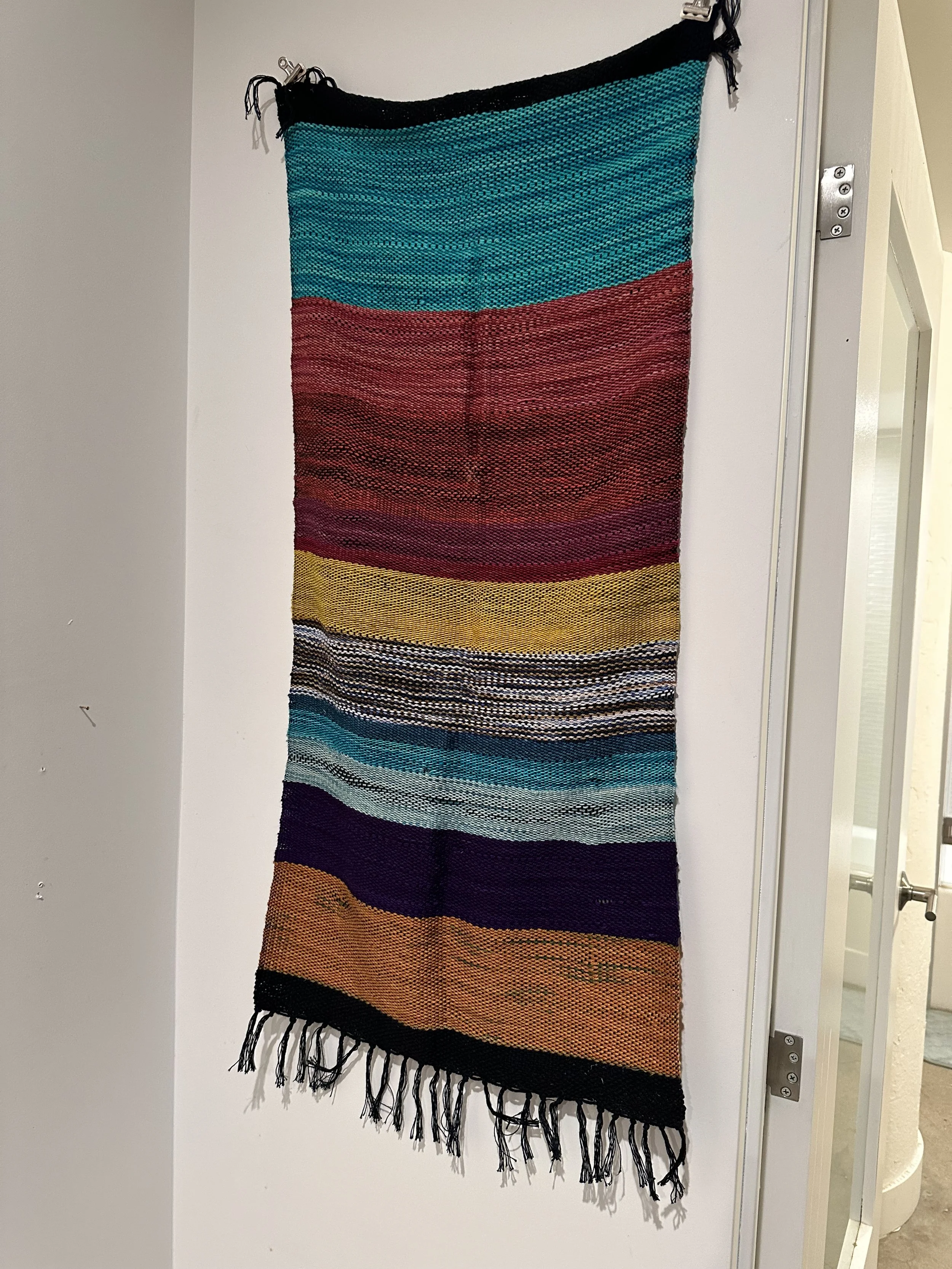May
This month I invested in studio practice. I did a ritual performance art photo shoot with Maya Mansour and Mercedes Zapata. We took over 500 photos of ritual fruits and objects with my hands, playing with different forms and images. We created a backdrop that added dimensionality and texture as well as added a quality of sensuality. The 7 fruits that I choose are the ones that are Biblically connected to the Holy Land. Scripture states that the Holy Land (Palestine/Israel) is “a land of wheat and barley, and vines and fig-trees and pomegranates; a land of olive-trees and honey;” (Deuteronomy 8:8). Note that in the Bible honey refers to date honey so the 7 species are known as wheat, barley, grape, fig, pomegranates, olive, and date. For the wheat, I used the traditional Jewish Challah bread which is typically woven through three strands of dough.
Creating these photo series with the hand and the ritual fruit illustrated some of the themes I have been contemplating through about the relationship between embodiment and disembodiment. On the one hand, the photos show a connective moment between the body represented by the hands, and the land represented by the fruits of the land. But on the other hand there is a disembodied quality there as well as the hands are only part of the body and the fruits are outside of the land. This experiment showed how embodiment and disembodiment can exist together in the same breath.
Additionally, I was curious in exploring what happens as the hands start ripping apart and interacting with the fruit in different ways. It obstructs the perfect ritual fruit by laying it bare and showing the insides of each fruit.
Here are a few links of the photos, the first includes all of them and then each link below shows how I narrowed the photos down.
https://www.hadarcohen.me/photos
https://www.hadarcohen.me/photos2
https://www.hadarcohen.me/photos3
https://www.hadarcohen.me/final
Additionally, I created a stop motion short film of the hands in action.
I also have a piece that I weaved using yarn that was left over from various prayer rugs that I made. I used them all to make one prayer rug which shows how multiplicity can be threaded into one. I have been thinking both about how the hands that destroy and the hands that create are the same structure. I am still not sure if I will include this in my exhibition but I felt that it showed a contrast to the other hand movements.
I also interviewed a few dancers who are Palestinian or Jewish and asked questions that I have been researching through my project. I hope to let their answers inform my thesis as well as create a soundscape taking various bits of audio from each interview and stringing it together as the sound for the film. Here are the artists and list of questions":
Questions For Interview
Can you describe your personal journey in understanding and connecting with your body as a dancer? How has this relationship evolved over time?
How do you perceive the role of emotions in your dance practice and performances? How do different emotions influence your movement and expression?
Do you believe there is a relationship between dance and healing? Have you experienced or witnessed instances where dance has been therapeutic for yourself or others?
Have you encountered any challenges or barriers in expressing certain emotions through dance? Have emotions blocked you from creating work? How have you navigated these challenges?
In what ways do you believe your dance work intersects with political or social issues? How do you incorporate these elements into your performances?
How do you feel your movement work connects to political activism?
How do you personally define embodiment in the context of dance? What does it mean for you to feel fully embodied in your movement?
On the flip side, how do you understand disembodiment within dance?
Can you describe a moment or experience where you felt particularly connected to your body during a performance? What factors contributed to this sense of connection?
How do you feel that this moment with the ongoing genocide in Gaza is affecting your dance work and relationship to movement and the body?
How does the frame of exile impact your work? How does the relationship with exile relate to connection to land and movement?
I also hosted a communal ritual night in which I guided people to write on a piece of paper anything they want to voice about Palestine and Israel, what they are scared of saying, what they haven’t admitted to themselves or anything else that comes up. Then we sat in a circle and each person ripped up the paper they wrote into a collective bowl. We witnessed each person rip their pieces of paper in a collective ritual. This experiment brought together the personal practice I have been playing with into a more communal space. Part of what I was asking is how can we communicate outside of words and more through our felt sense in the body? How can witnessing each other’s hands movements reveal more about what they are trying to express than the words they write?
Here are the video pieces from this communal ritual night, I am still in the process of editing them together.
I also started developing my thesis more and writing it from a more personal place. Here is the link for that so far:
https://docs.google.com/document/d/12iAtdKVFWlPflGvwTA393PwOvSfvuCyhN5-wBKxRM4w/edit
